Abstract
1. The EEG effects of granisetron, a potent and selective 5-HT3 receptor antagonist (160 micrograms kg-1), and lorazepam (2.5 mg) were examined in 12 healthy male volunteers. 2. The results indicated that lorazepam had a marked effect on the CNS, significantly increasing power in the slow (1-7 Hz) and fast (13-20 Hz; 21-30 Hz) wavebands whilst reducing power in the mid range (8-12 Hz). 3. In contrast there was no demonstrable effect of granisetron on the EEG at the dose tested, and no evidence of a pharmacodynamic interaction between the two compounds.
Full text
PDF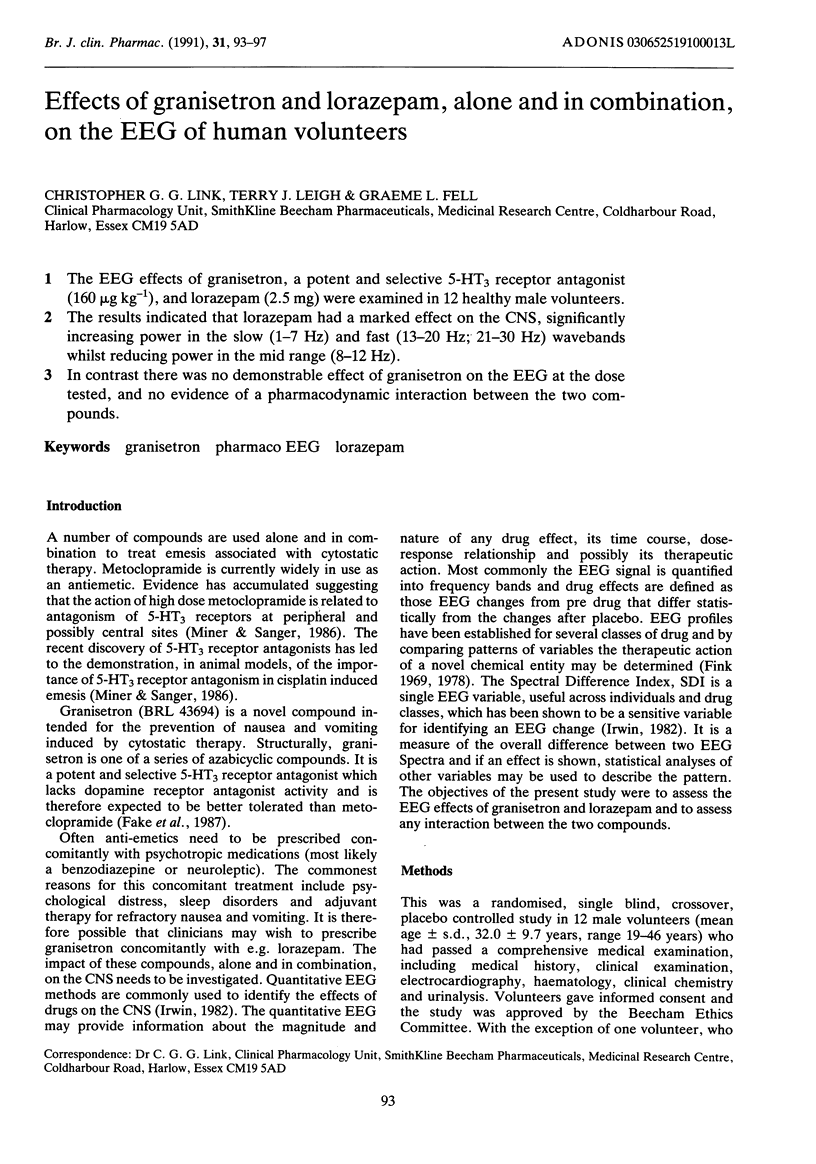
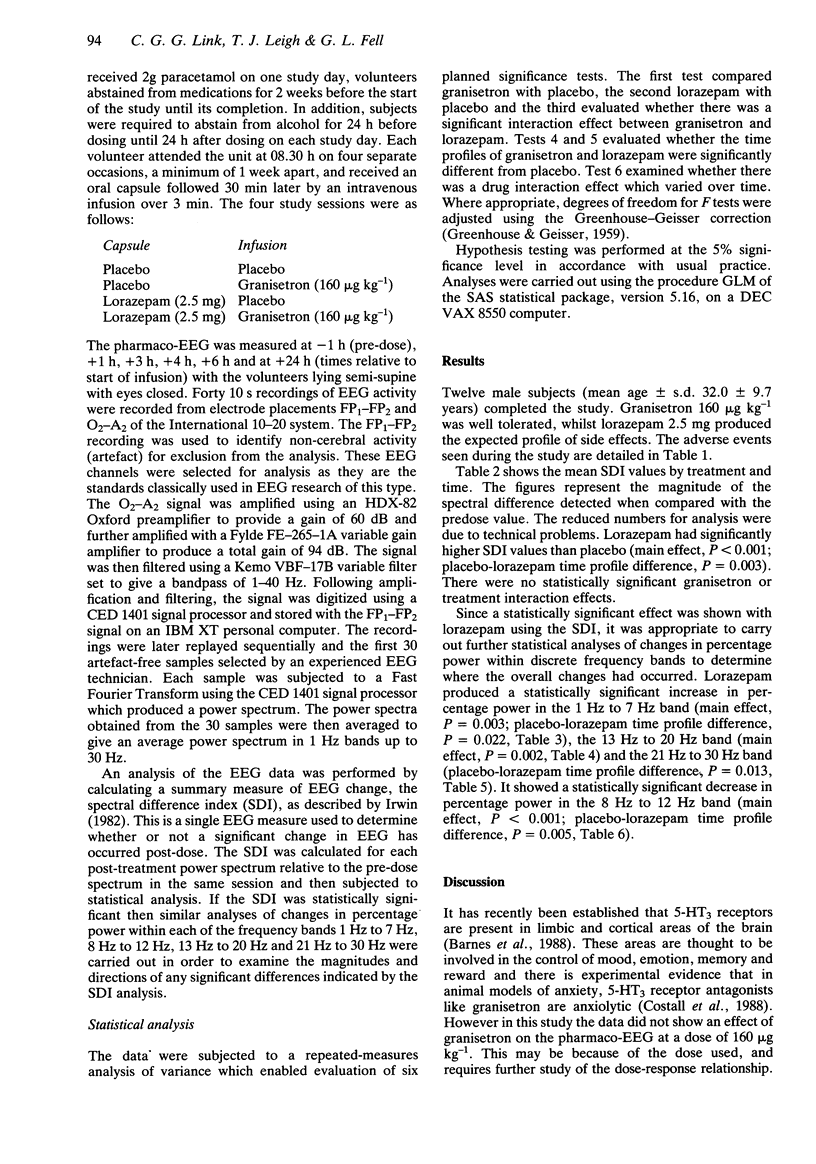
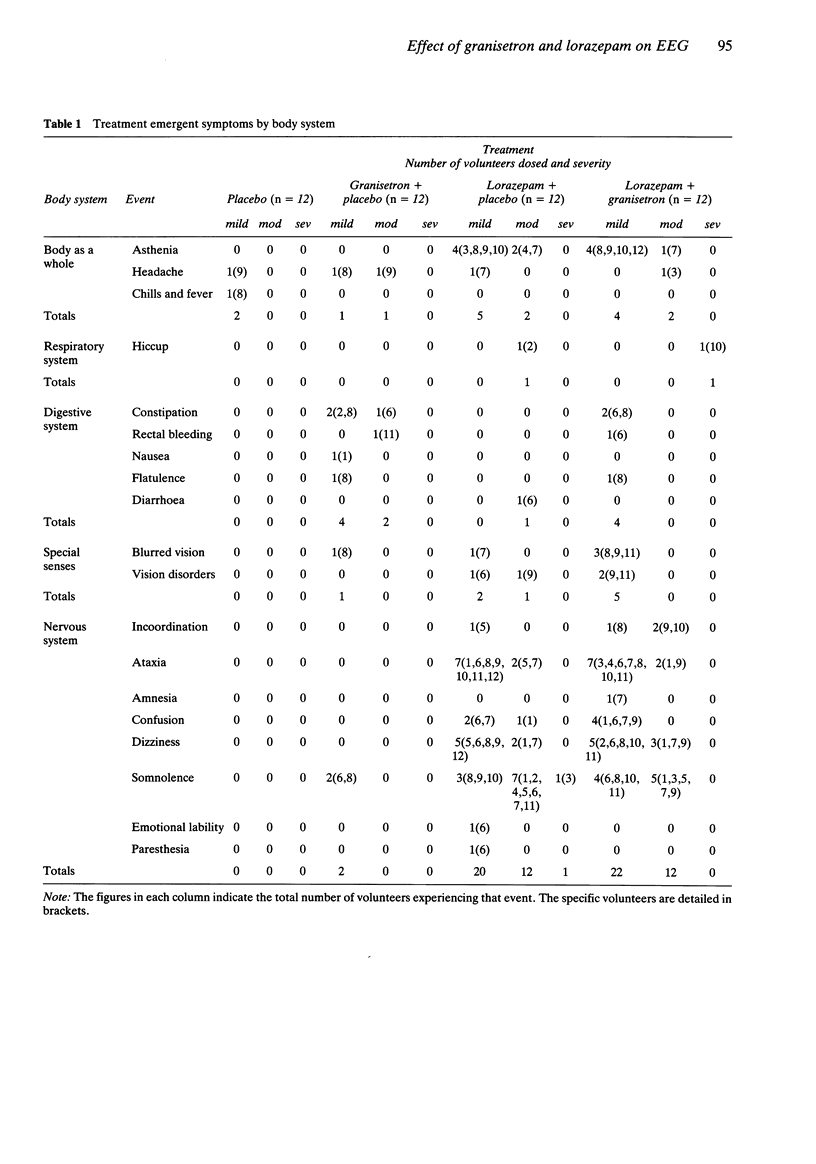
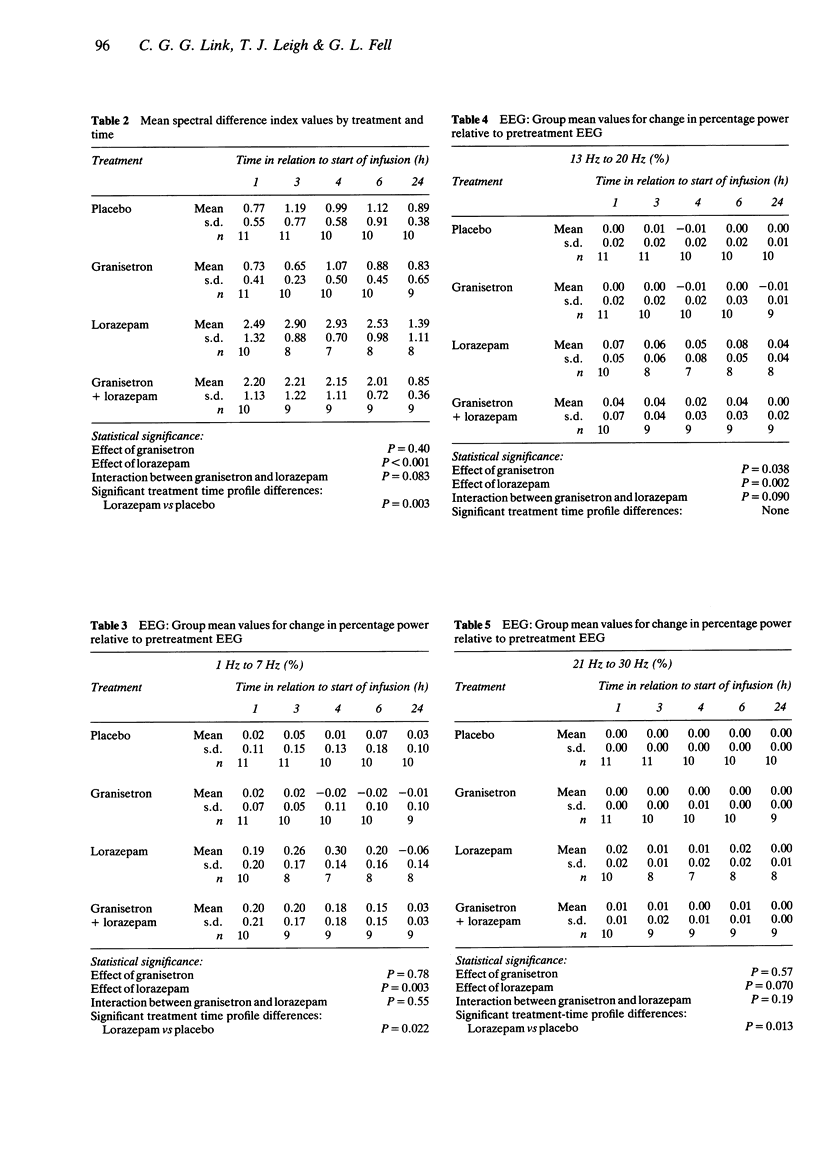
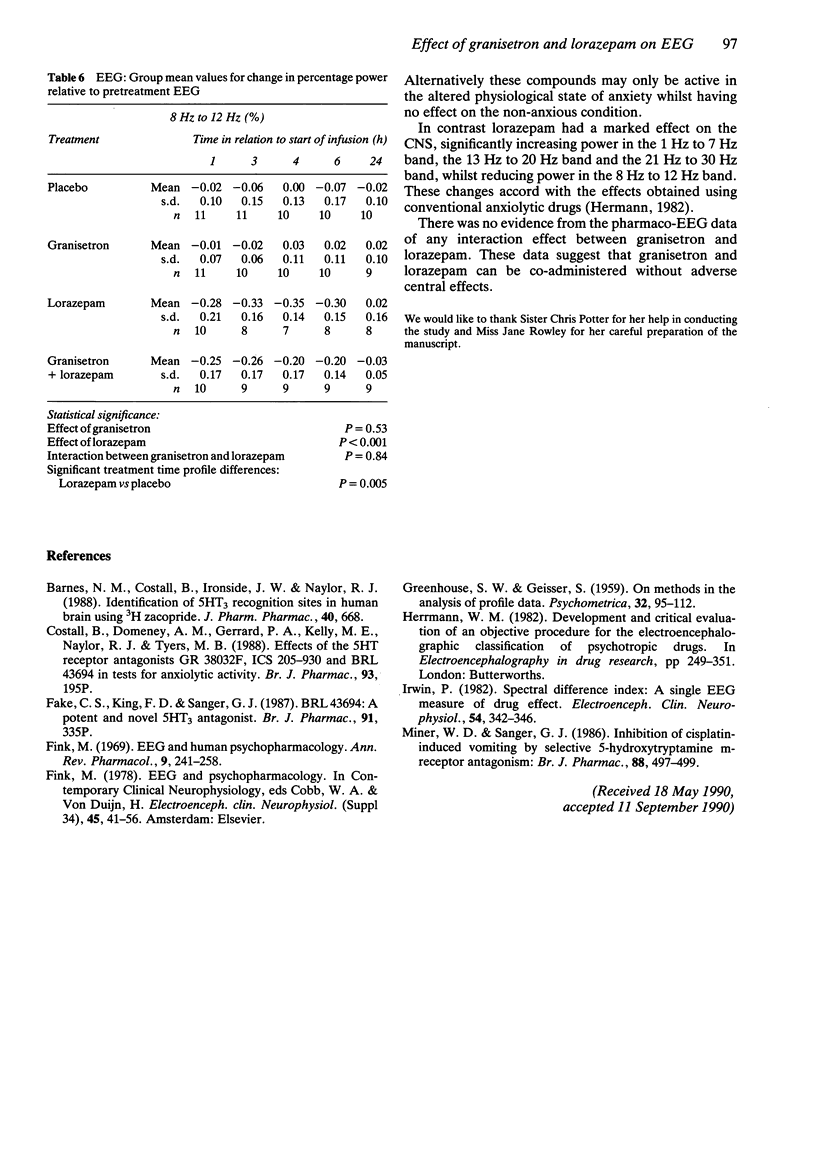
Selected References
These references are in PubMed. This may not be the complete list of references from this article.
- Barnes N. M., Costall B., Ironside J. W., Naylor R. J. Identification of 5-HT3 recognition sites in human brain tissue using [3H]zacopride. J Pharm Pharmacol. 1988 Sep;40(9):668–668. doi: 10.1111/j.2042-7158.1988.tb05338.x. [DOI] [PubMed] [Google Scholar]
- Fink M. EEG and human psychopharmacology. Annu Rev Pharmacol. 1969;9:241–258. doi: 10.1146/annurev.pa.09.040169.001325. [DOI] [PubMed] [Google Scholar]
- Irwin P. Spectral difference index: a single EEG measure of drug effect. Electroencephalogr Clin Neurophysiol. 1982 Sep;54(3):342–346. doi: 10.1016/0013-4694(82)90184-5. [DOI] [PubMed] [Google Scholar]
- Miner W. D., Sanger G. J. Inhibition of cisplatin-induced vomiting by selective 5-hydroxytryptamine M-receptor antagonism. Br J Pharmacol. 1986 Jul;88(3):497–499. doi: 10.1111/j.1476-5381.1986.tb10228.x. [DOI] [PMC free article] [PubMed] [Google Scholar]


